World
Top Hezbollah commander among 14 killed in Israeli strike on Beirut
Israel, which last fought an all-out war against Hezbollah 18 years ago, has said it will use force if necessary to ensure its citizens can return to northern Israel.
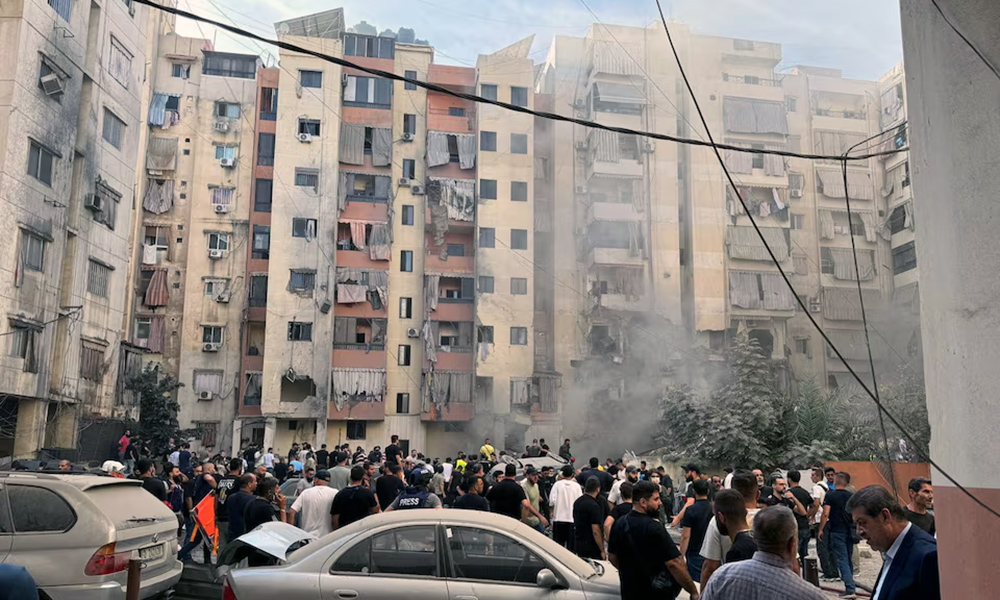
Israel killed a top Hezbollah commander and other senior figures in the Lebanese movement in an airstrike on Beirut on Friday, vowing to press on with a new military campaign until it is able to secure the area around the Lebanese border, Reuters reported.
The Israeli military and a security source in Lebanon said Ibrahim Aqil had been killed with other senior members of an elite Hezbollah unit in the airstrike, sharply escalating the year-long conflict between Israel and the Iran-backed group.
Hezbollah confirmed Aqil’s death in a statement just after midnight that called him “one of its top leaders,” without providing details of how he died.
In a second statement issued later, Hezbollah said Aqil was killed in Beirut’s southern suburbs of Dahiyeh in what it called a “treacherous Israeli assassination”.
It said that Ahmed Wahbi, a commander who oversaw the military operations of the Radwan special forces during the Gaza war until early 2024, was also killed in the Israeli strike.
Lebanon’s health ministry said at least 14 people died in the strike and the toll was expected to climb as rescue teams worked through the night. The ministry did not reveal whether the toll included Aqil or any other Hezbollah commanders.
Earlier, the ministry said at least 66 people were injured, nine of whom were in critical condition.
A second security source said at least six other Hezbollah commanders died when multiple missiles slammed into the opening of a building’s garage. The explosion tore into the building’s lower levels as Aqil met other commanders inside, read the report.
In its statements, Hezbollah said that several more of its members were killed, but it did not disclose whether they were commanders or its foot soldiers.
Witnesses reported hearing a loud whistling and several consecutive blasts at the time of the strike.
In a brief statement carried by Israeli media, Prime Minister Benjamin Netanyahu said Israel’s goals were clear and its actions spoke for themselves.
Defence Minister Yoav Gallant, who said this week that Israel is launching a new phase of war on the northern border, posted on X: “The sequence of actions in the new phase will continue until our goal is achieved: the safe return of the residents of the north to their homes.”
Tens of thousands of people have been evacuated from homes on both sides of the Israel-Lebanon border since Hezbollah began rocketing Israel in October in sympathy with Palestinians in the nearly year-old Israeli war against Hamas in Gaza.
Israel, which last fought an all-out war against Hezbollah 18 years ago, has said it will use force if necessary to ensure its citizens can return to northern Israel.
The Israeli military described Aqil as the acting commander of the Radwan special forces unit, and said it had killed him along with around 10 other senior commanders as they met. Aqil sat on Hezbollah’s top military council, sources in Lebanon told Reuters.
The strike inflicted another blow on Hezbollah after two days of attacks in which pagers and walkie-talkies used by its members exploded, killing 37 people and wounding thousands. Those attacks were widely believed to have been carried out by Israel, which has neither confirmed nor denied its involvement.
Local broadcasters showed groups of people gathered near the site, and reported they were searching for missing people, most of them children. Drones were still flying over Beirut’s southern suburbs hours after the strike.
“We are not afraid, but we want a solution. We cannot continue with the country like this,” said Alain Feghali, a resident of Beirut who spoke to Reuters. “War? I don’t know if it started or not, but nothing is reassuring. It is clear that the two sides will not stop.”
The U.N. Special Coordinator for Lebanon, Jeanine-Hennis Plasschaert, said Friday’s strike in a densely populated area of Beirut’s southern suburbs was part of “an extremely dangerous cycle of violence with devastating consequences. This must stop now.”
The strike marked the second time in less than two months that Israel has targeted a leading Hezbollah military commander in Beirut. In July, an Israeli airstrike killed Fuad Shukr, the group’s top military commander, read the report.
Aqil had a $7-million bounty on his head from the United States over his link to the deadly bombing of Marines in Lebanon in 1983, according to the U.S. State Department website.
The Israeli military said Aqil had been head of Hezbollah operations since 2004 and was responsible for a plan to launch a raid on northern Israel, similar to the Hamas-led attack on southern Israel on Oct. 7 that triggered the war in Gaza.
“The Hezbollah commanders we eliminated today had been planning their ‘October 7th’ on the northern border for years,” Israeli army chief General Herzi Halevi said.
“We reached them, and we will reach anyone who threatens the security of Israel’s citizens.”
The Israeli military reported warning sirens in northern Israel following the Beirut strike, and Israeli media reported heavy rocket fire there.
Hezbollah said it twice fired Katyusha rockets at what it described as the main intelligence headquarters in northern Israel “which is responsible for assassinations”.
White House national security spokesperson John Kirby said he was not aware of any Israeli notification to the United States before the Beirut strike, adding Americans were strongly urged not to travel to Lebanon, or to leave if they were there.
However he added that, “war is not inevitable … and we’re going to continue to do everything we can to try to prevent it.”
The current conflict between Israel and Hezbollah, ignited by the Gaza war, has intensified significantly this week.
On Thursday night, the Israeli military carried out its most intensive airstrikes in southern Lebanon since the conflict erupted almost a year ago.
The conflict between Israel and Hezbollah is the worst since they fought a war in 2006. Tens of thousands of people have had to leave homes on both sides of the border.
While the conflict has largely been contained to areas at or near the frontier, this week’s escalation has heightened concerns that it could widen and further intensify.v
World
Trump says Zelenskiy wants to back out of critical minerals deal
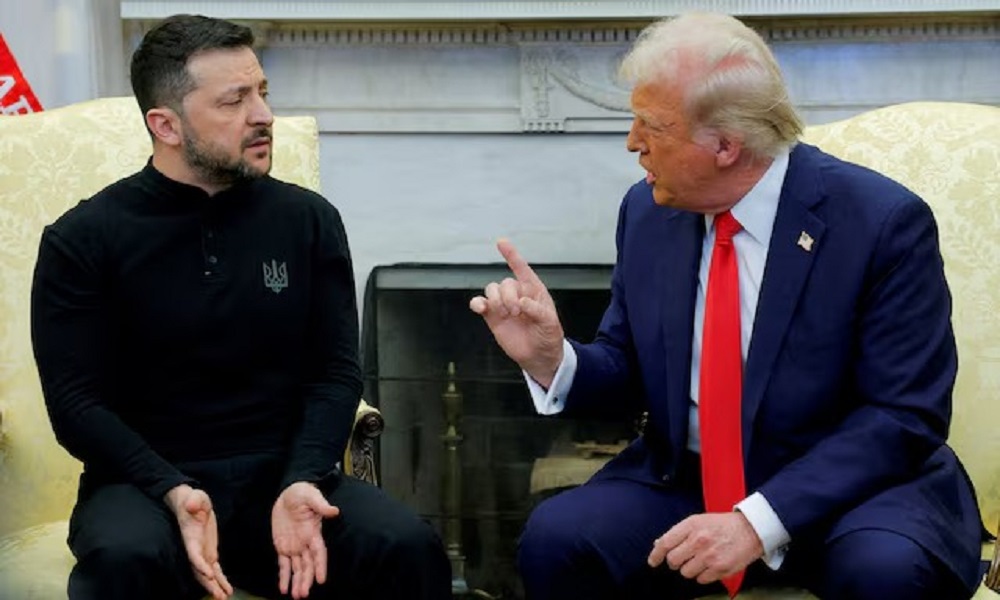
U.S. President Donald Trump said on Sunday Ukrainian President Volodymyr Zelenskiy wants to back out of a critical minerals deal, warning the Ukrainian leader would face big problems if he did.
“He’s trying to back out of the rare earth deal and if he does that he’s got some problems, big, big problems,” Trump told reporters.
“He wants to be a member of NATO, but he’s never going to be a member of NATO. He understands that.”
(Reuters)
World
South Korea, China, Japan seek regional trade amid Trump tariffs
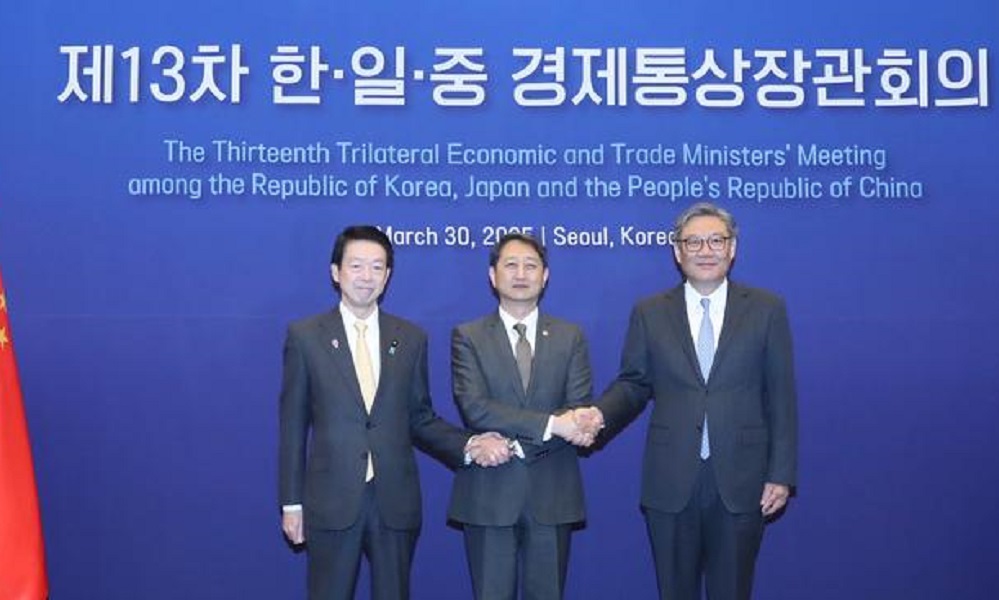
South Korea, China and Japan held their first economic dialogue in five years on Sunday, seeking to facilitate regional trade as the three Asian export powers brace from U.S. President Donald Trump’s tariffs.
The countries’ three trade ministers agreed to “closely cooperate for a comprehensive and high-level” talks on a South Korea-Japan-China free trade agreement deal to promote “regional and global trade”, according to a statement released after the meeting.
“It is necessary to strengthen the implementation of RCEP, in which all three countries have participated, and to create a framework for expanding trade cooperation among the three countries through Korea-China-Japan FTA negotiations,” said South Korean Trade Minister Ahn Duk-geun, referring to the Regional Comprehensive Economic Partnership.
The ministers met ahead of Trump’s announcement on Wednesday of more tariffs in what he calls “liberation day”, as he upends Washington’s trading partnerships.
Seoul, Beijing and Tokyo are major U.S. major trading partners, although they have been at loggerheads among themselves over issues including territorial disputes and Japan’s release of wastewater from the wrecked Fukushima nuclear power plant.
They have not made substantial progress on a trilateral free-trade deal since starting talks in 2012.
RCEP, which went into force in 2022, is a trade framework among 15 Asia-Pacific countries aimed at lowering trade barriers.
Trump announced 25% import tariffs on cars and auto parts last week, a move that may hurt companies, especially Asian automakers, which are among the largest vehicle exporters to the U.S.
After Mexico, South Korea is the world’s largest exporter of vehicles to the United States, followed by Japan, according to data from S&P.
The ministers agreed to hold their next ministerial meeting in Japan.
(Reuters)
World
Myanmar quake death toll hits 1,700 as aid scramble intensifies
India, China and Thailand are among Myanmar’s neighbours that have sent relief materials and teams, along with aid and personnel from Malaysia, Singapore and Russia.
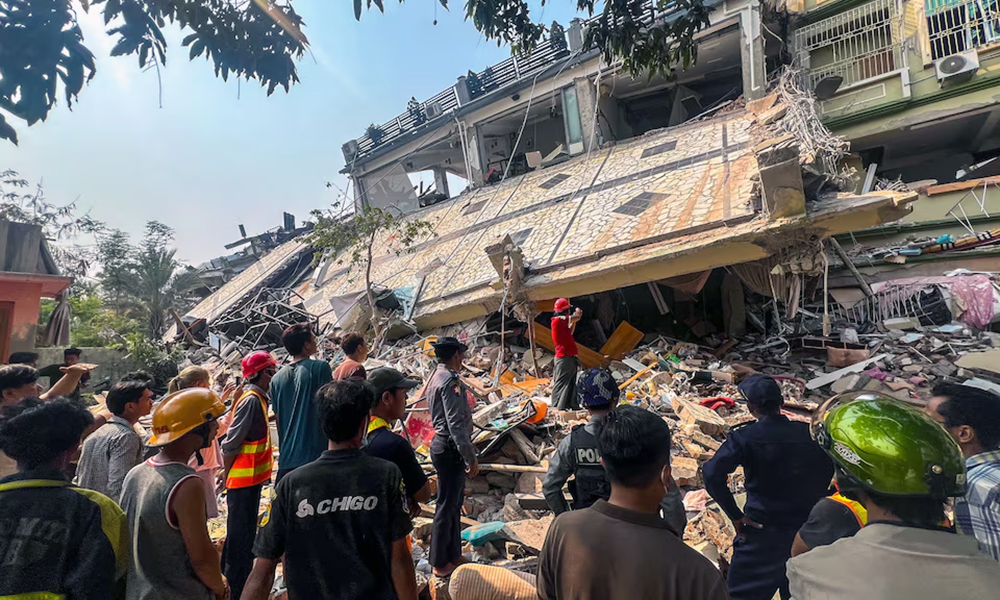
The toll from Myanmar’s earthquake continued to rise on Sunday, as foreign rescue teams and aid rushed into the impoverished country, where hospitals were overwhelmed and some communities scrambled to mount rescue efforts with limited resources.
The 7.7-magnitude quake, one of Myanmar’s strongest in a century, jolted the war-torn Southeast Asian nation on Friday, leaving around 1,700 people dead, 3,400 injured and over 300 missing as of Sunday, the military government said.
The junta chief, Senior General Min Aung Hlaing, warned that the number of fatalities could go up and his administration faced a challenging situation, state media reported, three days after he made a rare call for international assistance.
India, China and Thailand are among Myanmar’s neighbours that have sent relief materials and teams, along with aid and personnel from Malaysia, Singapore and Russia.
“The destruction has been extensive, and humanitarian needs are growing by the hour,” the International Federation of Red Cross and Red Crescent Societies said in a statement.
“With temperatures rising and the monsoon season approaching in just weeks, there is an urgent need to stabilise affected communities before secondary crises emerge.”
The devastation has piled more misery on Myanmar, already in chaos from a civil war that grew out of a nationwide uprising after a 2021 military coup ousted the elected government of Nobel Peace Prize laureate Aung San Suu Kyi.
Critical infrastructure – including bridges, highways, airports and railways – across the country of 55 million lie damaged, slowing humanitarian efforts while the conflict that has battered the economy, displaced over 3.5 million people and debilitated the health system rages on.
In some areas near the epicentre, residents told Reuters that government assistance was scarce, leaving people to fend for themselves.
“It is necessary to restore the transportation routes as soon as possible,” Min Aung Hlaing told officials on Saturday, according to state media. “It is necessary to fix the railways and also reopen the airports so that rescue operations would be more effective.”
The U.S. Geological Service’s predictive modelling estimated Myanmar’s death toll could top 10,000 and losses could exceed the country’s annual economic output.
Hospitals in parts of central and northwestern Myanmar, including the second-biggest city, Mandalay, and the capital Naypyitaw, were struggling to cope with an influx of injured people, the U.N. Office for the Coordination of Humanitarian Affairs said late on Saturday.
The quake also shook parts of neighbouring Thailand, bringing down an under-construction skyscraper and killing 18 people across the capital, according to Thai authorities.
At least 76 people remained trapped under the debris of the collapsed building, where rescue operations continued for a third day, using drones and sniffer dogs to hunt for survivors.
The opposition National Unity Government, which includes remnants of the previous administration, said anti-junta militias under its command would pause all offensive military actions for two weeks from Sunday.
The devastation in some areas of upper Myanmar, such as the town of Sagaing near the quake’s epicentre, was extensive, said resident Han Zin.
“What we are seeing here is widespread destruction – many buildings have collapsed into the ground,” he said by phone, adding that much of the town had been without electricity since the disaster hit and drinking water was running out.
“We have received no aid, and there are no rescue workers in sight.”
Sections of a major bridge connecting Sagaing to nearby Mandalay collapsed, satellite imagery showed, with spans of the colonial-era structure submerged in the Irrawaddy river.
“With bridges destroyed, even aid from Mandalay is struggling to get through,” Sagaing Federal Unit Hluttaw, a political association linked to the NUG, said on Facebook.
“Food and medicine are unavailable, and the rising number of casualties is overwhelming the small local hospital, which lacks the capacity to treat all the patients.”
In Mandalay, scores of people were feared trapped under collapsed buildings and most could not be reached or pulled out without heavy machinery, two humanitarian workers and two residents said.
“My teams in Mandalay are using work gloves, ropes and basic kits to dig and retrieve people,” said one of the humanitarian workers. Reuters is not naming them because of security concerns.
“There are countless trapped and still missing. The death toll is impossible to count at the moment due to the number trapped and unidentified, if alive.”
A video filmed by a Mandalay resident on Saturday and shared with Reuters showed patients in beds, some attached to drips, on the grounds outside a 500-bed orthopaedic hospital in the city.
Public and private health care facilities in Mandalay, including the Mandalay General Hospital and parts of Mandalay Medical University, were damaged by the quake, according to the World Health Organization.
Russian and Indian rescue workers were heading to Mandalay, and multiple teams of Chinese, Thai and Singapore rescue personnel have also arrived in the country.
In Bangkok, at the site of the collapsed 33-storey building, rescuers surrounded by shattered concrete piles and twisted metal continued their efforts to rescue dozens of workers trapped under the rubble.
Teerasak Thongmo, a Thai police commander, said his team of policemen and rescue dogs were racing against time to locate survivors, struggling to move around metal debris and sharp edges on an unstable structure.
“Right now, our team is trying to find anyone that might still be alive. Within the first 72 hours, we have to try and save those still alive,” he said.
Near the rescue operations, relatives and friends of the missing and trapped construction workers waited for news. Some broke down.
“Ploy, Ploy, Ploy, my daughter, I’m here for you now!” one woman wailed, as she was hugged by two others. “Ploy, can you hear me calling out for you?”
-

 Latest News5 days ago
Latest News5 days agoAfghanistan has the right to access Amu River’s water: Uzbek minister
-

 Latest News4 days ago
Latest News4 days agoAmnesty international urges Pakistan to halt Afghan deportations
-

 Latest News4 days ago
Latest News4 days agoAfghanistan-Iran-Europe railway corridor activated
-

 Business4 days ago
Business4 days agoAfghanistan ships first consignment to Europe via Khaf-Herat railway
-
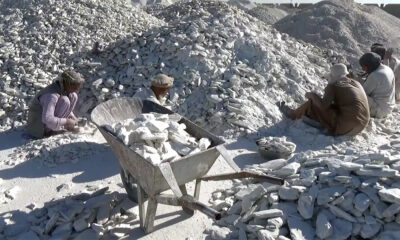
 Business3 days ago
Business3 days ago36 mining contracts inked over the past year: Mines ministry
-

 Sport4 days ago
Sport4 days agoDe Kock fireworks see Kolkata thrash Rajasthan in IPL
-

 Latest News3 days ago
Latest News3 days agoDried fruit market in Herat booms ahead of Eid-al-Fitr
-

 Regional3 days ago
Regional3 days agoPowerful quake in Southeast Asia kills several, Myanmar declares state of emergency
























